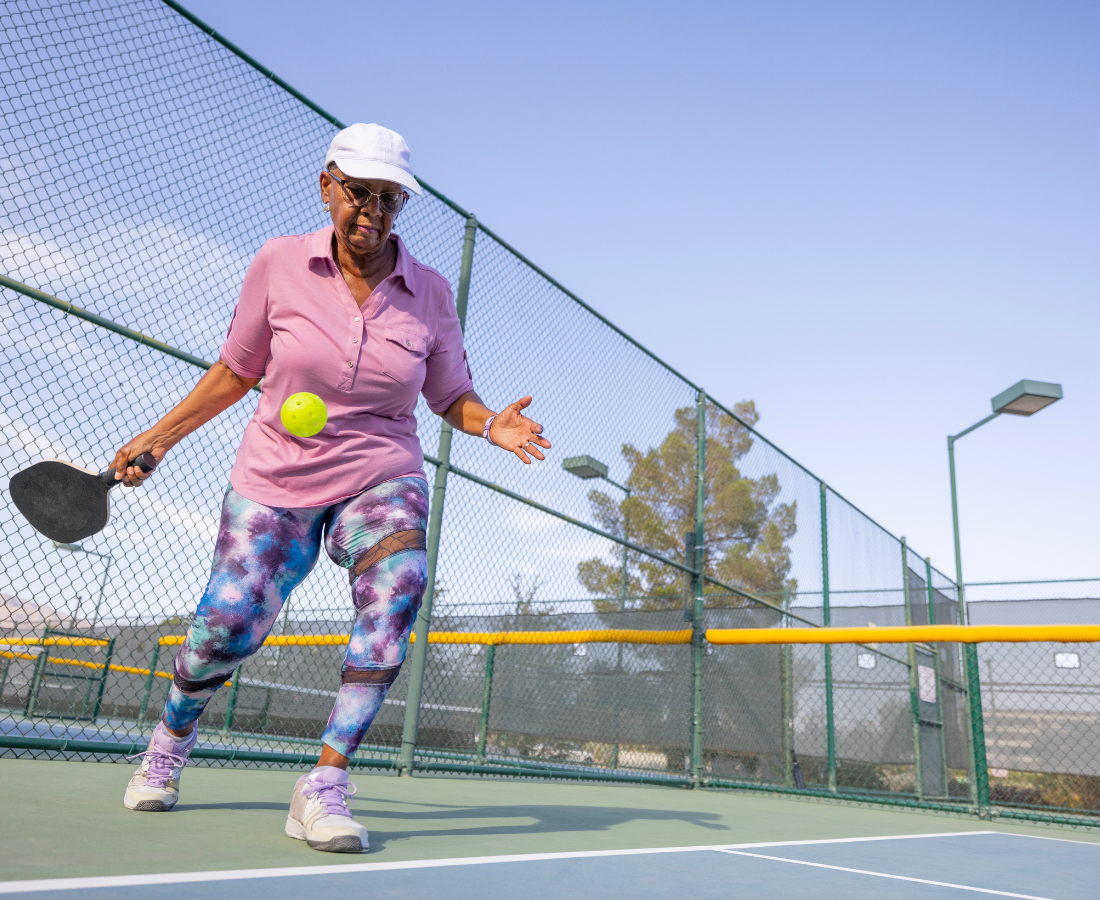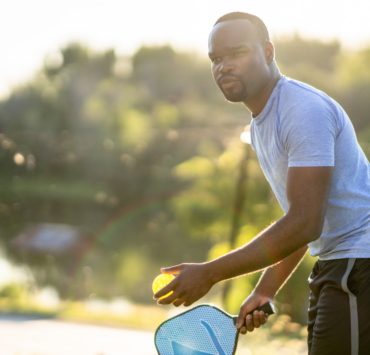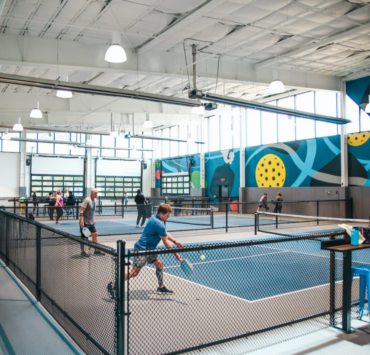When you play your first pickleball match, the rules can seem overwhelming.
What’s the Double Bounce Rule? What’s the Two-Bounce Rule? What is this “kitchen” area that everyone keeps talking about?
Pickleball can seem really complicated at first. One of the biggest sources of confusion is the difference between the double bounce and two-bounce rule. They seem like they are interchangeable, but there are several differences between the two.
We’re going to break down each rule and share how each one influences the strategy and flow of the game.
Double Bounce Rule vs. Two-Bounce Rule
At first glance, the double bounce and two bounce rules seem like different names for the same rules. This could not be further from the truth! In the USA Pickleball Official Rulebook, both rules are considered faults but defined in completely different ways.
What Is the Double Bounce Rule?
When a ball bounces twice on one side of the court, it is considered a double bounce. The Double Bounce rule means that if a ball bounces twice on one side of the court before it is returned, the point is over.
If the ball bounces twice on the return team’s side, the serving team is awarded the point. If the ball bounces twice on the serving team’s side, the point is over, and serving responsibilities move to the second server or the other team.
What is the Two-Bounce Rule?
The Two-Bounce Rule is what helps set pickleball apart from a sport like tennis. When the ball is served, each side must hit a groundstroke before they can volley. This is called the Two-Bounce Rule.
During a match, this means that if you serve the ball over the net, your opponent must let it bounce before hitting their shot. Then, you or your partner must let the ball bounce before hitting it back over the net. After that, players can volley.
If you are returning your opponent’s serve, you must let the ball bounce before hitting your return. After they hit the ball back at you, you or your partner can volley.
How the Two-Bounce Rule Influences Pickleball Strategy
The Two-Bounce Rule is crucial to pickleball because it shifts the focus to strategy instead of power. Without the Two-Bounce rule, the serving team could employ a serve-and-volley strategy, like in tennis. Serve and volley strategies are aggressive and cause points to end quickly.
The Two-Bounce Rule evens the playing field between the serving and returning team. It shifts the focus from having a strong return to having a strong and strategic third shot.
How the Two-Bounce Rule Influences the Third Shot
In the book Pickleball: The Ultimate Beginner’s Guide to Fun, Friends, and Strategies, author Dan Jamal breaks down pickleball strategy with the help of experienced coaches and players. The Two-Bounce Rule is one of pickleball’s critical rules and heavily influences the strategy shared in the book.
The Return
It starts with the return. Several coaches recommend returning serves deep instead of short into the kitchen.
“A deep return allows you more time to get into position – right up with your partner forming a ‘wall at the net’ at the kitchen line while making your opponent’s third shot more difficult,” coach M.J. Miniati said.
Remember, when you return a serve, the serving team must let the ball bounce before hitting it. They have to wait until the ball bounces, giving you and your partner enough time to get up to the kitchen line and, potentially, control the net.
The Third Shot
The serving team also wants to get to the net and control the kitchen. The third shot helps them do this. As Jamal says in Pickleball: The Ultimate Beginner’s Guide to Fun, Friends, and Strategies: “The third shot is considered the most important one because it can set the tone for the rest of the game.”
If the returning team hits a high, soft return, it is often best to back up, let the ball bounce, and hit a strong groundstroke right down the middle.
If the returning team hits a low return, it is often best to hit a perfect third-shot drop. The ball must bounce before you hit it, of course. Then, you can use a well-executed drop shot that lands in the kitchen. As your opponent tries to field it, you can move up to the net.
Did You Know the Difference Between the Two-Bounce and Double-Bounce Rule?
Did you use the terms Two-Bounce Rule and Double Bounce Rule interchangeably? The nuances are slight but impactful. The Two-Bounce rule is one of the things that makes pickleball so unique and has a huge impact on strategy. How do you explain the differences between the rules to newcomers?



